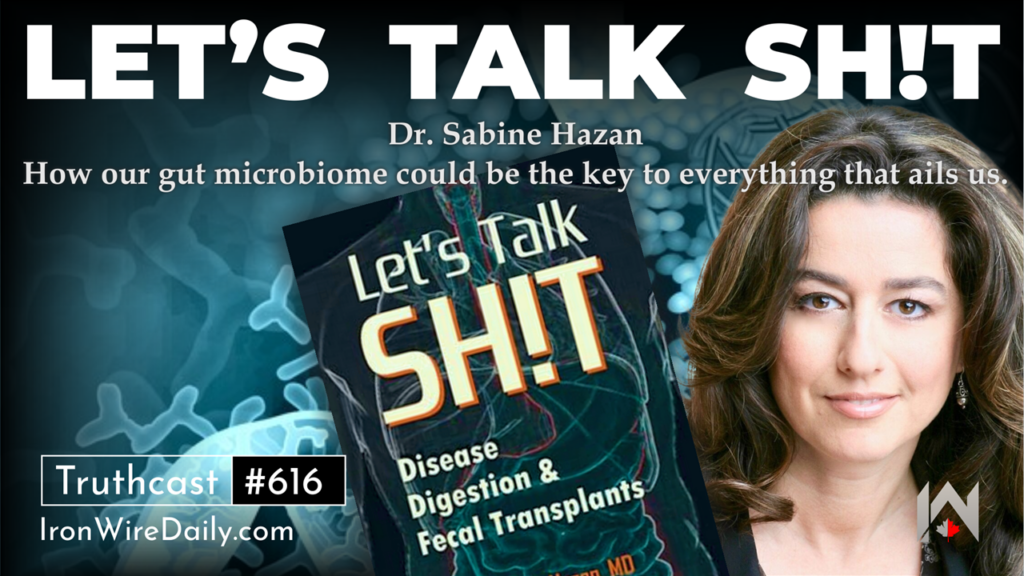General Mills Tried Natural-Colored Trix. Cereal Buyers Wanted Artificial Dyes Back. + More
Source: Children’s Health Defense
General Mills Tried Natural-Colored Trix. Cereal Buyers Wanted Artificial Dyes Back.
The Minnesota Star Tribune reported:
The U.S. Food and Drug Administration (FDA) announced this week it wants artificial colors out of food, like it or not, a stance U.S. Health and Human Services (HHS) Secretary Robert F. Kennedy Jr. has championed. General Mills was ahead of the curve when the company announced it was taking artificial colors out of some cereals a decade ago. Just two years after that announcement, in 2017, the artificially dyed Trix were back by popular demand.
”Consumers have differing food preferences,” Golden Valley-based General Mills said at the time, “and we heard from many Trix fans that they missed the bright, vibrant colors and the nostalgic taste of the classic Trix cereal.” On Tuesday, the nation’s top public health officials indicated those fans might again find themselves disappointed under a plan to ban artificial food coloring.
“For the last 50 years, we have been running one of the largest uncontrolled scientific experiments in the world on our nation’s children without their consent,” FDA Commissioner Marty Makary said at a news conference. “And today, we are removing these petroleum-based chemicals from their food supply.”
HHS Secretary Robert F. Kennedy Jr. said “the industry has voluntarily agreed” to phase out artificial dyes. The FDA has not yet set a timeline for that phase-out, but food companies did not push back on Kennedy’s characterization.
Food Companies Agree to Phase out Synthetic Dyes, Handing MAHA a Victory
Food manufacturers will phase out eight synthetic dyes from all U.S. products by the end of 2026, the federal government announced today in a move that reflects the growing reach of the Make America Healthy Again movement.
Decrying the “toxic soup of synthetic chemicals” in Americans’ food supply, Food and Drug Administration head Marty Makary said removing the dyes from food as well as medications is part of the Trump administration’s broader effort to address the underlying, preventable root causes of chronic disease, particularly among children.
“ADHD is not a genetic problem and our obesity epidemic is not a willpower problem, it’s something adults have done to children,” he said at the event in Washington, D.C.
Food companies have voluntarily consented to getting rid of the artificial dyes, Makary said, but there is currently no formal agreement or ban. “I believe in love, and let’s start in a friendly way and see if we can do this without any statutory or regulatory changes,” he said.
RFK’s Plan to Phase out Synthetic Food Dyes Could Face Industry Pushback
The Trump administration announced its intention to phase out synthetic dyes used to enhance color in common foods like candy and cereals. At a press conference Tuesday, Health and Human Services Secretary Robert F. Kennedy Jr. said his agency is making the move as a first step to improve the nation’s food supply and address chronic disease.
“We are going to get rid of the dyes and then one by one, we’re going to get rid of every ingredient and additive in food that we can legally address,” he said. The watchdog group Center for Science in the Public Interest has pushed for bans on synthetic dyes for years. Thomas Galligan, principal scientist at CSPI said he had hoped the U.S. Food and Drug Administration’s (FDA’s) Tuesday announcement would be a ban on synthetic dyes, not a voluntary agreement to get the food industry to cooperate.
“The FDA has the authority to ban them outright if they wanted to,” he told NPR. “So it’s a bit of a strange announcement.” Galligan warns voluntary agreements have fallen apart before. “It’s worth pointing out that food companies have made promises like this before. They’ve claimed they’re going to get rid of these food dyes or other additives within a certain timeframe, and then they have consistently reneged on those promises.”
Op-Ed: What It Will Take to Ban Ultra-Processed Food in School Meals
Last month, California moved to ban “particularly harmful” ultra-processed foods (UPFs) from school meals. This initiative is a hot topic in several other states and also has a fair chance of taking hold on a federal level, given that HHS Secretary Robert F. Kennedy Jr. is clearly very opposed to UPFs — and has just taken steps to phase out certain food dyes, commonly used in UPFs.
I want to start by saying, I’m all for this. I run a company of chefs trying to help school food programs around the country move away from ultra-processed foods and cook more from scratch. This is my life. I wholeheartedly believe we should be doing everything we can to ensure that the meals we are serving students are as thoughtfully prepared, delicious, and nutritious as possible.
That said, what looks like a positive change is actually quite complicated. There are a lot of rules already in place around school meals — and those rules, even when made with the best of intentions, have not always led to the most positive outcomes. A UPF ban might help students eat better, but only if schools, and school kitchen staff, get the support they need to succeed with the changes.
Feeling Unhappy? It May Be Because of Your Food Choices
The Texarkana Gazette reported:
When 10 million people are brought together in one massive review of 14 studies, you’re getting some pretty reliable health info. And that’s what a 2024 meta-review did when it explored the association between eating ultra-processed foods (UPFs) and health problems. The result? The researchers identified 32 different conditions that can be linked to eating these nutrition-stripped, obesity-, heart disease-, cancer-, insomnia-, dementia-, and diabetes-associated foods.
That’s pretty upsetting! And I bet you’ll be surprised by just how upsetting it is. The research found that these lousy foods increase your risk of mental disorders and anxiety by up to 53% and increases the risk of depression by 22%.
But the damage doesn’t stop there. The review also found that UPFs are associated with an increased risk of breast, colorectal and pancreatic cancer, sleep problems, asthma, high blood pressure, Crohn’s disease, ulcerative colitis, obesity, metabolic syndrome, non-alcoholic fatty liver disease, elevated blood sugar levels — and more.
What to Know About Processed and Ultra-Processed Food
Take a stroll down the middle aisles of any American grocery store, and you’ll be surrounded by rows of brightly colored packaged macaroni and cheese, instant soups and chips in all forms and flavors — all with long ingredient lists. These and other familiar favorites offer consumers a convenient, tasty and often affordable meal or snack.
Studies suggest, however, that nearly two-thirds of the average American diet consists of highly processed or “ultra-processed” foods. And growing scientific scrutiny and public concern are forcing policymakers to take a closer look at what these foods are — and what they may be doing to our health.
“We’re creating ingredients so rapidly, we don’t have time to study them,” said Alyson Mitchell, a professor and food chemist in the UC Davis Department of Food Science and Technology. “The food technology has moved faster than the health studies have.”














